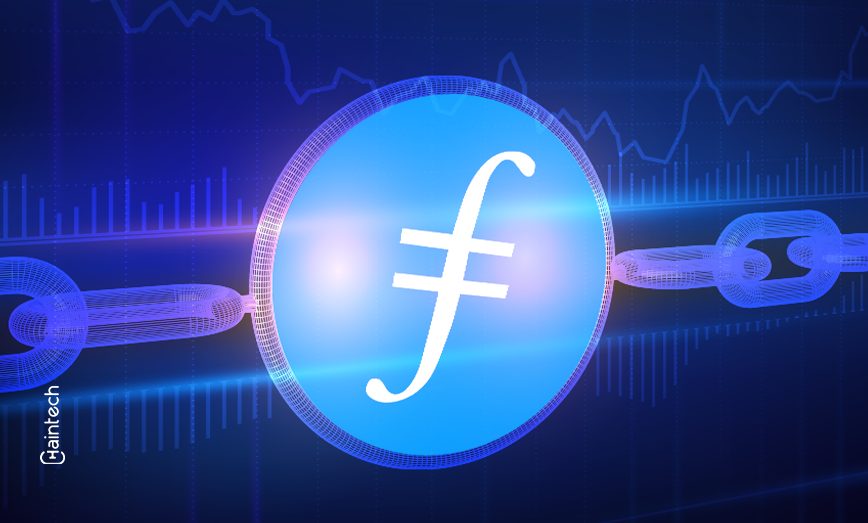Filecoin – The future of cloud storage

Introduction
Would you consider renting out your computer space like you would your home on Airbnb? If so, Filecoin has a fascinating idea.
Protocol Labs’ 2017 Filecoin offers a new storage solution. It changes how data is stored, accessed, and rewarded, not just stored. Filecoin’s primary function is to establish a decentralised storage network by utilising blockchain technology.
In this blog, we’ll examine Filecoin’s fundamentals, technology, economic model, practical uses, challenges, and potential to change decentralised storage. So strap up as we explore Filecoin’s creative universe.
What is Filecoin?
Filecoin (FIL) isn’t just another place to share files. The brilliant blockchain technology has made it possible for decentralised file keeping and sharing to become a whole new ball game. Like Dropbox, but instead of having one company store all the data, people like you and me can bid on miners’ storage space.
Protocol Labs, the same company that developed the InterPlanetary File System (IPFS), is the creator of Filecoin. Its objective is to create a worldwide market in which all people, independent of any one government, can store and access digital content.
The first coin offering (ICO) for Filecoin was held by Protocol Labs in 2017. It raised $257 million in just one hour! The ICO was only open to accredited investors, but it was the start of a revolutionary path.
Investors were given FIL tokens on the genesis block of the Filecoin network. Each token was sold for $1.30 during the ICO. Investors could lock their tokens for a certain amount of time, though, in exchange for savings.
Here’s the interesting part: 30% of the FIL supply was given out right away, with some going to the development team and some to people who invested in the ICO. As block awards, the last 30% will be given to nodes gradually over the next 16 years.
It’s not just about saving files with Filecoin; it’s also about changing the way we think about sharing and storing data in a decentralised world.
How Does Filecoin Work?
Filecoin keeps track of deals made with its own cryptocurrency token, FIL, and agreements between users and storage providers (miners). It works like a ledger. But how does it make sure that no one can access or change your files? That’s why Proof of Spacetime and Proof of Replication are important.
Proof of Replication requires miners to prove they’re storing your data accurately by hashing the file and recording it on the Filecoin blockchain. This confirms the encrypted data storage. Meanwhile, Proof of Space-Time ensures miners hold the correct user data at specific times, checking randomly to penalise any node that fails to provide proof of storage.
- Use the selected DApp’s user-friendly interface to upload your files.
- Within the DApp, select a storage provider from those available.
- Specify the storage terms such as duration and any other relevant details.
- Negotiate and agree on a price for the storage service in FIL tokens, the native cryptocurrency of Filecoin.
- Transfer the agreed-upon amount of FIL tokens to the storage provider as payment.
- The agreement details, including terms and payment, are recorded on the blockchain for transparency and security.
- If you need to retrieve your data, retrieval miners are promptly assigned to fetch it for you, ensuring quick access.
The FIL token fuels Filecoin. Miners earn FIL as rewards, while users pay in FIL to store their files. Besides its utility, FIL serves as a governance token, allowing users to vote on project matters.
Filecoin’s decentralised method changes the way storage works by letting people trade spare space on a global network. Filecoin is a strong and censorship-proof alternative to standard cloud storage services that protects data privacy and availability through cryptographic proofs of data integrity and reliability.
Features of Filecoin
1. Decentralised Architecture:
Filecoin uses a network of nodes that are not centralised to send data to computers around the world. Compared to centralised storage, this lowers the chance of losing information and makes it safer.
2. Secure Consensus Mechanisms:
The network uses strong consensus mechanisms to keep the integrity of stored files at all times and make sure that data is kept and retrieved safely.
3. Resistant to Security Breach:
Filecoin is more resistant to security breaches than traditional cloud storage, which depends on centralised servers that can go down or be hacked. This builds trust and user satisfaction.
4. Incentived Participation Model:
Filecoin gives users FIL coins as a reward for sharing their extra storage space with the network. This plan with incentives encourages network growth, which increases storage space and makes storage prices more competitive.
5. Scalability:
Filecoin is designed to grow naturally as more users sign up. This makes sure that storage space is always available, even as demand rises. Because it can be expanded, it can be used for a wide range of storage needs, from small businesses to individual users.
6. Open Source Code
Filecoin lets clients work together and provides storage based on open-source code. This means that people who sell storage don’t have to set up their own infrastructure program. Instead, Filecoin gives you that and other improvements as well.
7. Verification of Storage
Filecoin checks the storage. It’s easy to look through file past and make sure there’s enough space on your computer. It checks storage over time to make sure everything is still there. The rule says that all storage companies must offer files that are up to date 24 hours a day.
8. Storage Provider For NFTs
Filecoin controls the ability to store digital assets made of tokens that can’t be exchanged for cash. Digital assets in the form of non-fungible tokens are proof of title. A blockchain can only hold a certain amount of data, like music, digital art, and movies. Filecoin’s storage network saves real assets so that it can be a better choice.
Is Filecoin safe?
Filecoin uses strong security measures to protect users’ data. Filecoin breaks up data into smaller pieces, like shredding a document. Unlike traditional cloud storage, which saves data on centralized servers, this system breaks information into pieces. As a result, no one can reassemble the complete data without permission.
Filecoin’s system keeps track of how the pieces fit together, even though the data is broken up. Filecoin rearranges these pieces to put together the original file when data is needed. If a host tries to hack into Filecoin’s computer to get to the data, this method makes sure that they will only find jumbled, useless pieces instead of complete information.
In the end, Filecoin’s distinctive security features give users peace of mind because they know that their data is safe from unauthorized access or modification. Utilising decentralised storage and protection methods, Filecoin provides a safe and secure way to keep private data.
Competitors of Filecoin
Arweave:
Arweave offers a decentralised storage protocol known as the permaweb, where users can securely host their data without worrying about censorship or degradation. It provides various features like profit-sharing communities, Ardrive, and Verto, empowering users to store and share their content with confidence.
Pinata:
Backed by notable investors like OpenSea, Yuga Labs, and Polygon, Pinata is a leading platform for media storage and data sharing in the Web3 ecosystem. It enables creators to share files of any size and quality quickly and securely using IPFS. With features like content gating, short links, and previews, Pinata provides a seamless experience for content creators.
Orbit DB:
IPFS-based peer-to-peer database Orbit DB stores data for decentralised mobile and online applications. Its ability to offer unique data models for each database gives developers freedom and customisation. Orbit DB, developed by Protocol Labs and Haja Networks, is available in Node.js, Golang, and Python for a wide spectrum of developers.
Conclusion
In conclusion, Filecoin shows the future of cloud storage using blockchain-based protocols for secure, decentralised storage. Filecoin is leading the way, therefore we expect more systems to transform data storage.
Filecoin lets users rent out their spare storage space and reduces carbon footprints and electrical waste from hardware-based storage solutions. Filecoin’s novel method might disrupt the cloud storage sector, giving consumers control over their data and offering economic opportunities for providers.
Filecoin’s network effects will make data storage, content sharing, and decentralised apps more secure and censorship-resistant as decentralised storage grows.
Filecoin must overcome regulatory issues and widespread usage to reach its full potential. Despite these challenges, Filecoin is at the forefront of storing data and cloud storage.









